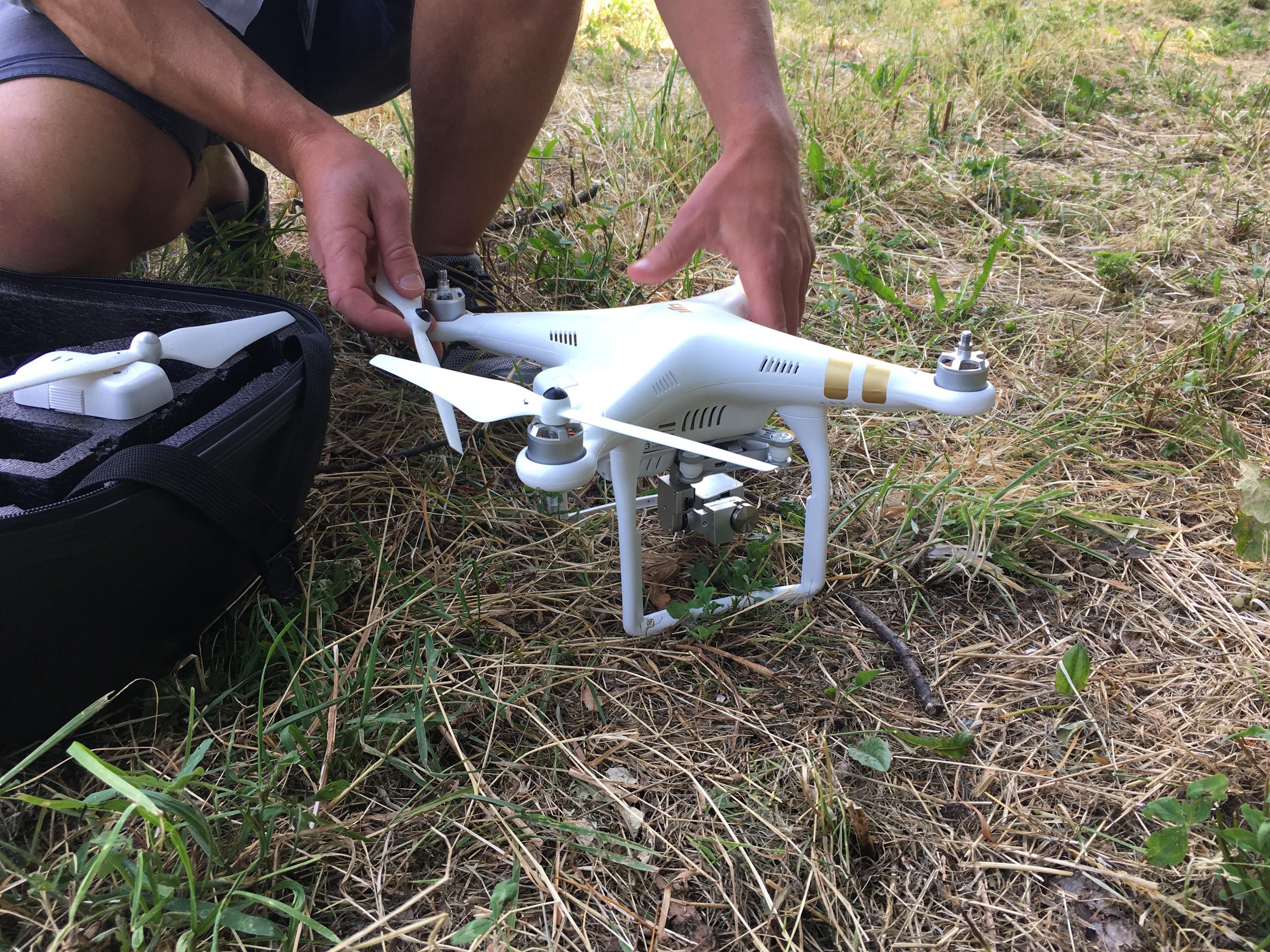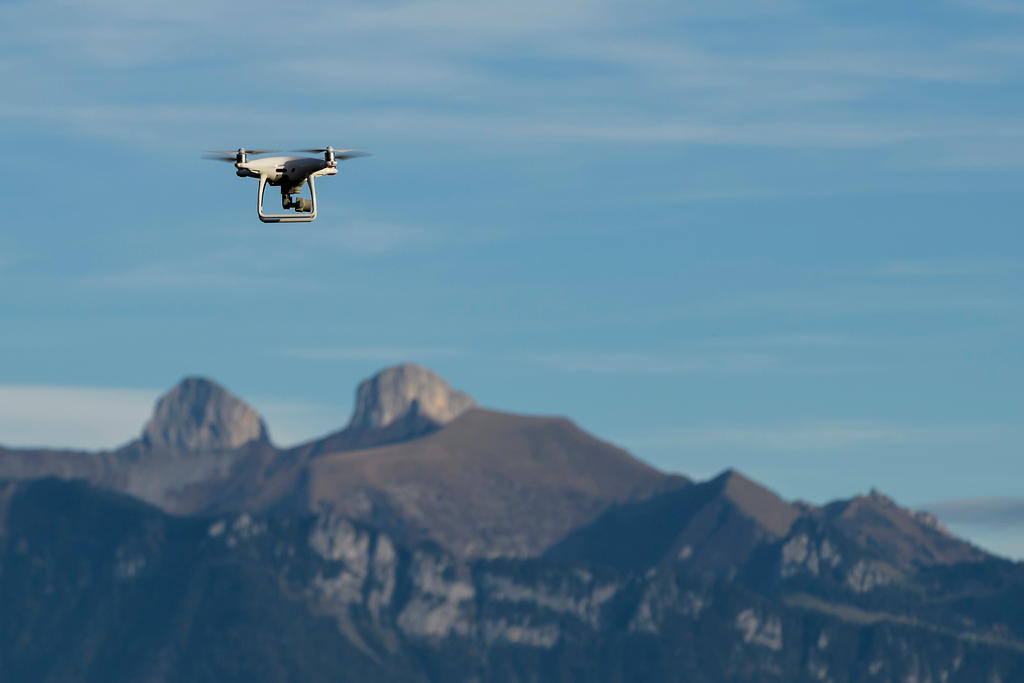Swiss scientists: ‘use your torso to pilot drones’

The torso is more intuitive – and more precise – than joysticks for piloting drones, both simulated and real, say scientists at the Swiss Federal Institute of Technology Lausanne (EPFL).
Work is already underway to implement this new body-machine-interface technology for search and rescue with drones, they say.
“Imagine piloting a drone using the movements of your torso and leaving your head free to look around, much like a bird,” the EPFL said in a statementExternal link. It said its research had shown that using the torso to pilot flying machines was “indeed more immersive – and more effective – than using the long-established joystick”.
The results of their study were published in Monday’s issue of PNASExternal link. Further explanation can be found in this EPFL video:
The scientists started by monitoring the body movements of 17 individuals using 19 infrared markers placed all over the upper body, as well as their muscular activity. Each participant followed the actions of a virtual drone through simulated landscapes viewed through virtual reality goggles.
Motion patterns emerged and scientists established torso-related strategies for piloting drones: they found that only four markers, on the torso, were needed to pilot flight simulators and real drones through a circuit of obstacles effectively.
Scientists compared their torso strategies to joystick control in 39 individuals. They found that torso drone control outperformed joystick control in precision and reliability with minimal training sessions.
Next steps
Scientists say, however, that their proof-of-concept system still requires body markers and external motion detectors in order to work.
The next steps are to make the torso strategy completely wearable for piloting flying objects. Researchers say the application range is huge, “from flight simulators to piloting drones and even perhaps planes of the future”.
A garment that implements the torso strategy into drone control without external motion detectors was developed at EPFL’s Laboratory of Intelligent Systems based on the PNAS findings, the statement said.

In compliance with the JTI standards
More: SWI swissinfo.ch certified by the Journalism Trust Initiative












You can find an overview of ongoing debates with our journalists here . Please join us!
If you want to start a conversation about a topic raised in this article or want to report factual errors, email us at english@swissinfo.ch.